A 15-Bean Soup is a nutritious blend of a variety of legumes such as northern, pinto, large lima, black eye, garbanzo, baby lima, green split pea, kidney, cranberry bean, small white, pink bean, small red, yellow split pea, lentil, navy, white kidney and black bean. According to the Linus Pauling Institute, legume intake is associated with a lower risk of Type 2 diabetes and cardiovascular disease. The 2005 Dietary Guidelines for Americans recommend a weekly intake of six servings -- or 3 cups -- of legumes for people who consume 2,000 calories a day.
Energy Nutrients
A 15-bean soup is a good source of lean protein, providing 8g per 1-cup serving. Protein is important for building and maintaining body tissue. MayoClinic.com recommends legumes as a healthy substitute for meat, which has more saturated fat and cholesterol. The bean soup contains 21g carbohydrate, primarily from starch and fiber. Carbohydrates are an important energy source for the body, especially for the brain. The beans are low in fat -- 0.5g -- and cholesterol-free.
Fiber
A cup of 15-bean soup is an excellent source of fiber, providing 9g total fiber. The Institute of Medicine recommends 25g fiber for women and 38g for men each day. Legumes contain both soluble and insoluble fiber. Fiber provides many health benefits -- lowering cholesterol levels and cardiovascular disease risk, aiding in weight management, maintaining digestive system health and preventing constipation.
Vitamins
According to the USDA National Nutrient Database and the FDA Daily Value charts, 15-bean soup provides 23 percent of the daily value, or DV, for folate and 12 percent of the DV for thiamin. Folate helps the body form red blood cells and genetic material within cells and helps prevent neural tube birth defects. Thiamin helps the body release energy from carbohydrates during metabolism and plays a vital role in normal functioning of the nervous system. Beans also contain small amounts of vitamin C, vitamin B-6, choline, vitamin K, niacin and riboflavin.
Minerals
A cup of 15-bean soup is also a good source of several minerals. It provides 12 percent of the DV for copper, 13 percent of the DV for iron, 11 percent of the DV for magnesium and 13 percent of the DV for phosphorus. According to the IOM, copper is a component of enzymes in iron metabolism. Iron is a component of hemoglobin and several enzymes. Magnesium is used in building bones, manufacturing proteins, releasing energy from muscle storage and regulating body temperature. Phosphorus helps build strong bones and teeth, release energy from fat, protein and carbohydrates during metabolism, form genetic material, cells membranes and enzymes and maintain pH. Beans also contain potassium, selenium and zinc.
Seasoning Packet
A can of 15-bean soup or soup made with a packet mix may contain hydrolyzed soy protein, maltodextrin, salt, artificial flavorings -- including artificial smoke flavor, and silicon dioxide -- an anti-caking agent. The seasoning does not contribute significantly to the nutrient content of the soup, with the exception of sodium.
Cooking Suggestions
To reduce the sodium content, flavor bean soup with herbs and spices -- basil, oregano, thyme, bay leaves, fresh parsley or cilantro, chili, onion or garlic powder or red pepper flakes. Add flavor and nutrients by adding a variety of vegetables such as onion, garlic, celery, carrots, bell pepper, tomatoes and spinach. Lemon juice or red wine or cider vinegar can also add flavor.
Related Articles
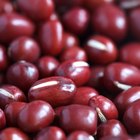
Nutrition Information for Adzuki Beans
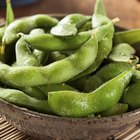
The Nutritional Value of Edamame Beans

Nutrition Information on Blueberries

What Is the Nutrition for Cranberry ...
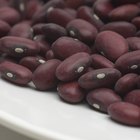
Red Kidney Beans Nutrition
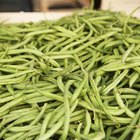
Nutritional Value of String Beans

Are Bean Sprouts Good for You?
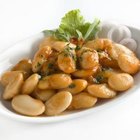
What Are the Benefits of Great Northern ...

How to Freeze Lentils

A List of Foods That Contain Choline
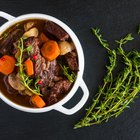
Calories in Vegetable Beef Soup

Essential Enzymes for Hair Growth

Does Benefiber Lower Cholesterol?
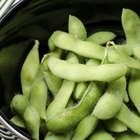
List of High Protein Vegetables
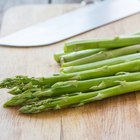
Top Vegetables With Selenium
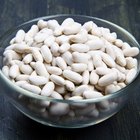
Cannellini Beans for Weight Loss
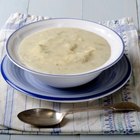
Potato Leek Soup Nutrition

Is Zinc Good for Hair Growth?
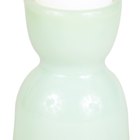
The Average Weight of a Boiled Egg

Which Vegetables Produce the Most ...
References
Writer Bio
Catherine Cox started writing in 1989. She has been published by “Nutrition and the M.D.” and “Consultant” and has written client education materials for health-care organizations. A dietitian and diabetes educator, Cox holds a Master of Public Health in nutrition science from the University of California, Los Angeles.